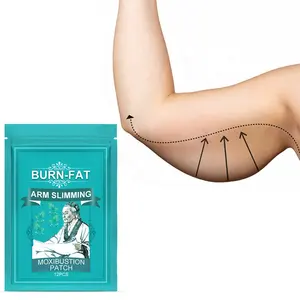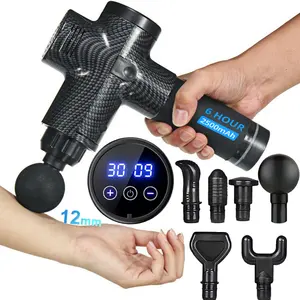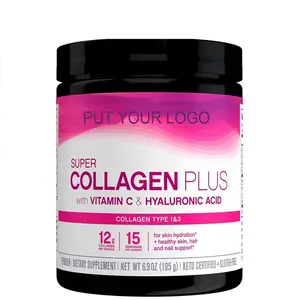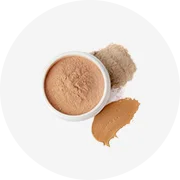Popular na sua indústria






Decoração Vitral Handmade Teto Cúpula Decorativa Clarabóia Edifício Janela De Vidro Decorativo
€ 32,56 - € 274,39
Pedido Mínimo: 2 Metros quadrados






4mm claro vidro estampado padrão fabricante figura caneladas com nervuras preço textura decorativo temperado painéis folhas moru vidro
€ 0,7441 - € 1,87
Pedido Mínimo: 2 Metros quadrados




Moru folha de vidro temperado transparente decorativa, folha de vidro texturizada com estampa de ondas
€ 4,56 - € 65,02
Pedido Mínimo: 10 Metros quadrados







5mm cinza 4mm flauta padrão moru estampado colorido vidro personalizado champanhe flauta nervurado painéis de vidro marrom temperado canelada
€ 1,86 - € 2,39
Pedido Mínimo: 100 Metros quadrados







Folhas texturizadas de vidro padrão, painéis de vidro texturizados
€ 3,33 - € 6,50
Pedido Mínimo: 50 Metros quadrados







Decorativa vidro temperado brilhante, decorativo 4mm 5mm 6mm 8m vidro fluido textura endurecido borrachudo padrão vidro de construção
€ 4,56 - € 46,42
Pedido Mínimo: 10 Metros quadrados







Reeded Padrão De Vidro Decorativo Transparente Temperado Com nervuras Reeded Figured Textured Painel De Vidro De Folha/Padrão De Vidro
€ 2,80 - € 2,98
Pedido Mínimo: 2 Metros quadrados






Painel de vidro laminado decorativo, parede de vidro temperado texturizado
€ 4,66 - € 9,31
Pedido Mínimo: 1000 Metros quadrados






Transparente baixo ferro temperado caneladas modelado gravado vidro painéis para porta e janela divisórias e grades
€ 4,56 - € 83,62
Pedido Mínimo: 10 Metros quadrados






Fabricante preço 3mm 4mm 6mm 8mm claro colorido Figurado vidro decorativo padrão vidro painel
€ 1,49 - € 2,78
Pedido Mínimo: 100 Metros quadrados






Painéis de vidro padrão togen estatuadas decorativas
€ 14,79 - € 20,37
Pedido Mínimo: 10 Metros quadrados






Decorativo Transparente Temperado Com Nervuras Reeded Moru Onda Canelada Vidro/arte Figurou Folha De Vidro Texturizada/painel de vidro padrão
€ 1,87 - € 2,14
Pedido Mínimo: 1000 Metros quadrados
Buscas Relacionadas:
vidro laminado custo painéispainel azul do vidro laminadotemperado laminado vidro piso painéispainel vidro ônix retroiluminadopainel vidro laminado verdepainéis ondulados do vidro laminadopainel laminado do assoalho do vidrobloco fibra vidropainéis coloridos do vidro texturizadopainéis vidro texturizadospainéis vidro inquebráveispainéis vitral manchadospainel vidro fumadopainéis azuis do vidropainéis vidro colorido vermelho






Decorativo Transparente Temperado Com Nervuras Reeded Moru Onda Canelada Vidro/arte Figurou Folha De Vidro Texturizada/painel de vidro padrão
€ 7,63 - € 44,65
Pedido Mínimo: 50 Metros quadrados





Fábrica vender boa qualidade waterwave textura padrão vidro decorativo partição transparente glassfor parede painel
€ 11,17
Pedido Mínimo: 54 Metros quadrados






3mm 4mm 5mm 8mm 10mm 12mm China Building fábrica de alta qualidade personalizado Caneladas Texturizado Reed Padrão Vidro painéis
€ 4,56 - € 45,58
Pedido Mínimo: 10 Metros quadrados






Painel de vidro de textura padrão 3d, preço competitivo, sem moldura, partição de vidro, janela, deslizante, porta, vidro de construção
€ 37,21 - € 46,51
Pedido Mínimo: 200 Metros quadrados






Moru folha de vidro temperado transparente decorativa, folha de vidro texturizada com estampa de ondas
€ 5,58
Pedido Mínimo: 50 Metros quadrados






Decorativa Transparente Canelada Nashiji Vidro Arte Texturizada Painel De Vidro De Padrão De Folha De Vidro
€ 3,26 - € 7,45
Pedido Mínimo: 1000 Metros quadrados






Água Efeito Ondulação Teto Texturizado Espelho Folha De Vidro De Fuso 3D Wall Art Home Decor Painel De Vidro Do Edifício
€ 2,70 - € 4,47
Pedido Mínimo: 100 Metros quadrados






Vidro temperado transparente decorativo/vidro texturizado gráfico/painel de vidro estampado
€ 3,61 - € 7,68
Pedido Mínimo: 2 Metros quadrados






Vidro canelado decorativo transparente temperado canelado Moru Wave/art figurado folha de vidro texturizado/painel de vidro padrão
€ 2,80 - € 4,66
Pedido Mínimo: 1000 Metros quadrados






Reeded Padrão De Vidro Decorativo Transparente Temperado Com nervuras Reeded Figured Textured Painel De Vidro De Folha/Padrão De Vidro
€ 46,51 - € 74,41
Pedido Mínimo: 2 Metros quadrados






Painel de vidro solar personalizado de 3.2mm com cor
€ 2,80 - € 9,31
Pedido Mínimo: 500 Metros quadrados






Painel de vidro de textura padrão 3d, preço competitivo, sem moldura, partição de vidro, janela, deslizante, porta, vidro de construção
€ 4,47 - € 16,56
Pedido Mínimo: 2 Metros quadrados






4mm-8mm claro temperado padrão vidro decorativo transparente vidro temperado painel
€ 3,73
Pedido Mínimo: 50 Metros quadrados






Atacado popular 3D escultura em diamante estampado com textura em relevo padrão de vidro arte figura folha de vidro/painel texturizado
€ 21,40 - € 23,26
Pedido Mínimo: 99 Metros quadrados






3mm grande ímpio transparente padrão vidro ondulação textura vidro personalizado reeded parede vidro painel
€ 6,52 - € 18,61
Pedido Mínimo: 60 Folhas






Vidro canelado de chuva canelado canelado ultra branco/art figurado folha de vidro texturizado/painel de vidro padrão
€ 2,80 - € 5,59
Pedido Mínimo: 10 Metros quadrados






Decorativo Transparente Temperado Com Nervuras Reeded Moru Onda Canelada Vidro/arte Figurou Folha De Vidro Texturizada/painel de vidro padrão
€ 2,76 - € 7,31
Pedido Mínimo: 100 Metros quadrados






Tinta azul texturizado fundido padrão laminado vidro painéis para parede divisória decoração
€ 5,31 - € 146,96
Pedido Mínimo: 2 Metros quadrados






Painéis de vidro texturizados vgc, painéis de vidro para janela e portas, tamanhos grandes 3mm-8mm de diamante/faixa/moru/flutelite/nashiji
€ 1,40
Pedido Mínimo: 200 Metros quadrados






Vidro canelado decorativo transparente temperado canelado Moru Wave/art figurado folha de vidro texturizado/painel de vidro padrão
€ 19,35 - € 21,21
Pedido Mínimo: 2 Metros quadrados






Painel de decoração de parede de vidro para decoração de paredes, vários padrões decorativos personalizados
€ 8,66 - € 9,31
Pedido Mínimo: 10 Metros quadrados






Arte Fundida Modelada Painéis De Vidro Canelados para Decoração De Parede Hot Melt Vidro de fusão temperado Hot Melt Vidro de fusão temperado
€ 3,26
Pedido Mínimo: 200 Metros quadrados






Painel de vidro laminado para porta divisória, vidro padrão transparente de 3 mm, 4 mm, 5 mm, vidro para painel solar, padrão kasumi
€ 0,9302 - € 2,80
Pedido Mínimo: 50 Peças






Decorativo transparente temperado caniço caniço onda sulco vidro/arte gráfico texturizado vidro folha/vidro modelado painel
€ 28,65 - € 60,09
Pedido Mínimo: 2 Metros quadrados






Painel de vidro para folha de vidro texturizada decorativa transparente ondulado canelado ondulado
€ 12,84
Pedido Mínimo: 10 Peças






Painel de vidro decorativo transparente de alta qualidade com estampa de arte em forma de coroa de madeira ondulado canelado e canelado
€ 9,31 - € 13,96
Pedido Mínimo: 50 Metros quadrados






Ultra clear modelado 2.5 milímetros folha de vidro temperado 3.2 milímetros painel solar
€ 4,66 - € 9,31
Pedido Mínimo: 100 Metros quadrados
Principais categorias
Sobre painéis vidro padrão texturizado
Eles podem ser simples, podem ser coloridos, mas todos os painéis vidro padrão texturizado. em Alibaba.com são únicos. Há uma coleção maravilhosa para navegar e encontrar a certa. Existem as grandes e ousadas ou as sutis e discretas. Independentemente da aparência desejada, o painéis vidro padrão texturizado. são bem feitos e com preços razoáveis. Este é realmente o paraíso dos compradores.
O conceito por trás do painéis vidro padrão texturizado. de Alibaba.com é aquecer o CBD e inalar o vapor. Uma abordagem básica e simples é uma unidade descartável. Estes podem ser pré-preenchidos com um óleo aromatizado de acordo com sua preferência. Isso pode ser simples, mas não precisa ser enfadonho. Muitos dos fornecedores oferecem impressão e embalagem personalizadas em pedidos grandes o suficiente. Isso permite que o varejista e o atacadista marquem como quiserem. Existem até várias cores para escolher.
É o não descartável painéis vidro padrão texturizado. que pode ser bastante elegante e elaborado. A maioria deles possui um sistema de bateria recarregável. A bateria alimenta o elemento de aquecimento de cerâmica. Alguns até possuem um dial para aumentar a voltagem, o que afeta a quantidade de vapor de CBD inalado. Por mais prático que seja, é a decoração que vale sempre a pena notar. Os vapes são quase do tamanho de um baralho de cartas, então há muito espaço para fotos, designs e logotipos. A imaginação é o limite para o que pode ser impresso nas unidades.
Para encontrar as melhores ofertas em painéis vidro padrão texturizado, visite Alibaba.com. Quer se trate de uma unidade descartável ou para guardar por um tempo, há uma enorme seleção para escolher. Com produtos de alta qualidade e preços excelentes, qualquer pessoa pode relaxar e se divertir.
O conceito por trás do painéis vidro padrão texturizado. de Alibaba.com é aquecer o CBD e inalar o vapor. Uma abordagem básica e simples é uma unidade descartável. Estes podem ser pré-preenchidos com um óleo aromatizado de acordo com sua preferência. Isso pode ser simples, mas não precisa ser enfadonho. Muitos dos fornecedores oferecem impressão e embalagem personalizadas em pedidos grandes o suficiente. Isso permite que o varejista e o atacadista marquem como quiserem. Existem até várias cores para escolher.
É o não descartável painéis vidro padrão texturizado. que pode ser bastante elegante e elaborado. A maioria deles possui um sistema de bateria recarregável. A bateria alimenta o elemento de aquecimento de cerâmica. Alguns até possuem um dial para aumentar a voltagem, o que afeta a quantidade de vapor de CBD inalado. Por mais prático que seja, é a decoração que vale sempre a pena notar. Os vapes são quase do tamanho de um baralho de cartas, então há muito espaço para fotos, designs e logotipos. A imaginação é o limite para o que pode ser impresso nas unidades.
Para encontrar as melhores ofertas em painéis vidro padrão texturizado, visite Alibaba.com. Quer se trate de uma unidade descartável ou para guardar por um tempo, há uma enorme seleção para escolher. Com produtos de alta qualidade e preços excelentes, qualquer pessoa pode relaxar e se divertir.

















